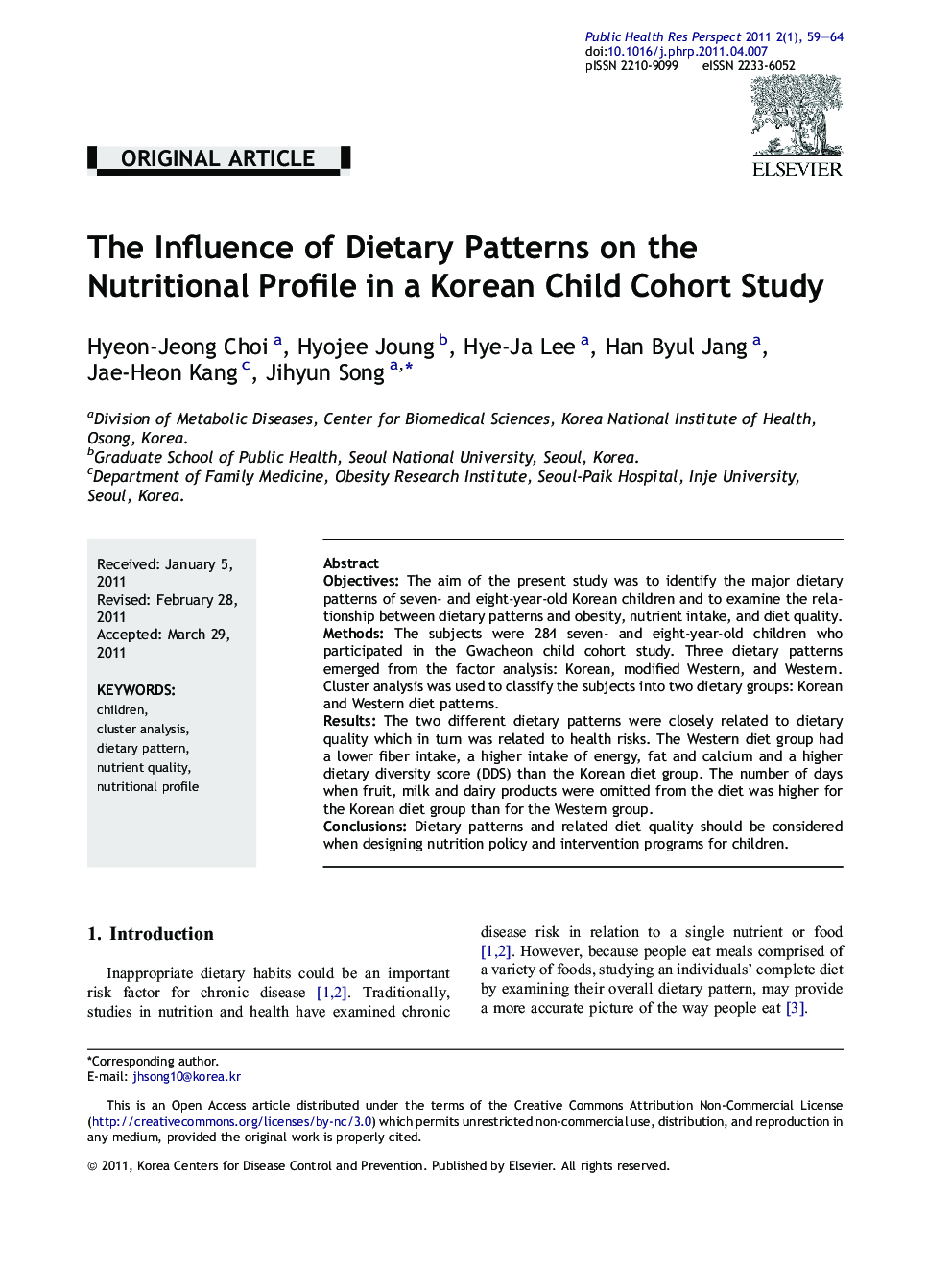| Article ID | Journal | Published Year | Pages | File Type |
|---|---|---|---|---|
| 4201983 | Osong Public Health and Research Perspectives | 2011 | 6 Pages |
ObjectivesThe aim of the present study was to identify the major dietary patterns of seven- and eight-year-old Korean children and to examine the relationship between dietary patterns and obesity, nutrient intake, and diet quality.MethodsThe subjects were 284 seven- and eight-year-old children who participated in the Gwacheon child cohort study. Three dietary patterns emerged from the factor analysis: Korean, modified Western, and Western. Cluster analysis was used to classify the subjects into two dietary groups: Korean and Western diet patterns.ResultsThe two different dietary patterns were closely related to dietary quality which in turn was related to health risks. The Western diet group had a lower fiber intake, a higher intake of energy, fat and calcium and a higher dietary diversity score (DDS) than the Korean diet group. The number of days when fruit, milk and dairy products were omitted from the diet was higher for the Korean diet group than for the Western group.ConclusionsDietary patterns and related diet quality should be considered when designing nutrition policy and intervention programs for children.
